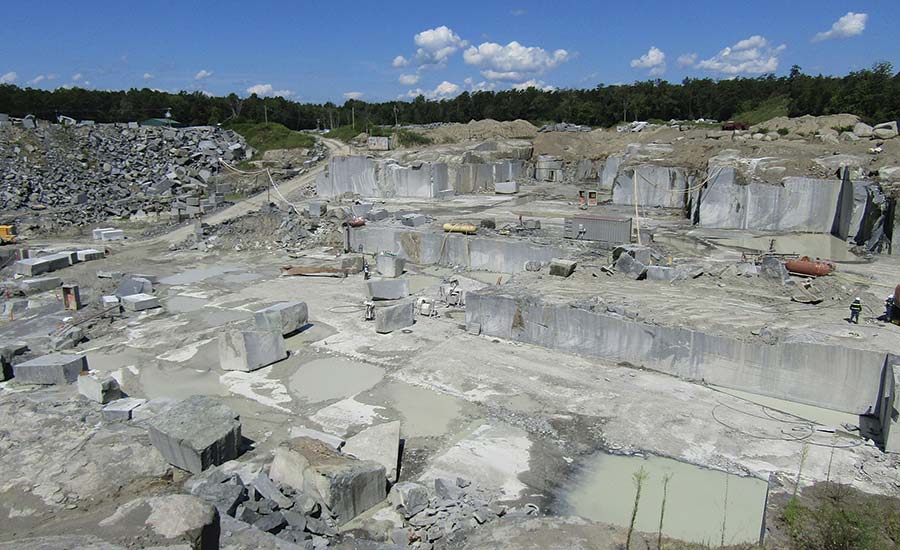Discovering Granite Quarries in South Africa: A Comprehensive Guide
Discovering Granite Quarries in South Africa: A Comprehensive Guide
Blog Article
Discovering the Rich History and Sustainable Practices of Granite Quarrying
As we stand on the precipice of revealing the elaborate tapestry of granite quarrying, a trip with time exposes not simply the physical act of removing stone however also the social and historical importance woven right into the extremely textile of this technique. From the ancient beginnings that laid the structure for modern-day quarrying strategies to the lasting techniques that are shaping the future of this market, each carve mark on granite surfaces informs a story waiting to be discovered (granite quarries in south africa). The tradition of granite quarrying extends far past simple removal; it is a testament to human ingenuity, durability, and the long-lasting allure of this majestic stone
Old Beginnings of Granite Quarrying
Going back to old civilizations, the method of quarrying granite has actually been an indispensable component of human history and architectural advancement. The earliest proof of granite quarrying go back to ancient Egypt, where large pyramids and detailed sculptures were crafted from this durable rock. The Egyptians utilized primitive devices to remove granite blocks from quarries, showcasing the importance of this material in their huge constructions.
Progressing in history, the Greeks also made considerable payments to the quarrying of granite. The Greeks utilized granite in various architectural marvels, such as temples and statues, showing their ability in shaping and sculpting this sturdy rock. The Romans additionally fine-tuned the methods of quarrying granite, utilizing sophisticated tools like knives and hammers to essence and form granite for their iconic frameworks.
With the centuries, the method of quarrying granite has developed, with modern technologies boosting performance while preserving the timeless appeal of this all-natural rock - granite quarries in south africa. From ancient worlds to contemporary builders, the heritage of granite quarrying proceeds to shape our world
Advancement of Quarrying Methods
The development of quarrying techniques has actually been marked by a continuous development in the direction of greater performance and accuracy in extracting granite. From the rudimentary approaches utilized by our forefathers to the advanced technologies made use of in modern-day quarrying procedures, the industry has actually gone through substantial improvements. Early quarrying techniques entailed manual work with standard tools such as knives, hammers, and wedges to extract granite blocks from the planet. As worlds proceeded, methods like fire-setting and primitive explosives were introduced to facilitate the extraction procedure. read this
Developments in computer-controlled devices and 3D modeling have optimized quarrying operations, leading to minimal environmental influence and boosted sustainability techniques. As the need for granite proceeds to increase, the development of quarrying methods stays essential to meeting industry requires successfully and sustainably.
Social Relevance of Granite
Granite holds a profound social importance throughout different civilizations due to its long-lasting presence in building masterpieces and respected monuments. The social value of granite prolongs past its physical qualities; it embodies durability, stability, and timelessness, making it an icon of withstanding heritages and customs.

Lasting Practices in Quarrying
In the middle of the rich background of granite quarrying and its social value lies a growing focus on sustainable techniques within the market. As environmental recognition and issues about source depletion have actually increased globally, the quarrying field has increasingly accepted sustainable techniques to reduce its influence on the atmosphere and surrounding areas.

In addition, recovery and recovery of quarry websites post-extraction are important to lasting methods. By bring back quarried areas to a natural or beneficial state, such as creating wild animals environments or leisure areas, quarriers can balance out the environmental impact of their procedures and contribute positively to the local ecological community.
Heritage of Granite Quarrying
With a historic backdrop steeped in workmanship and industrial progress, what enduring influence has granite quarrying left on the landscape of modern culture? The tradition of granite quarrying transcends plain removal methods; it has actually formed architectural marvels, city landscapes, and cultural heritage worldwide. The durable nature of granite has actually made it a favored choice for monoliths, buildings, and infrastructure, standing as a testimony to the skill and virtuosity of quarry employees across generations.
In addition, the economic impact of granite quarrying can not be ignored. The industry remains to offer employment chances and drive local economic situations in regions where granite removal is common. It has likewise spurred technical advancements in quarrying methods and equipment, bring about much more reliable and sustainable methods.
In regards to sustainability, the heritage of granite quarrying includes efforts to alleviate ecological influences through improvement tasks and responsible resource administration. By stabilizing financial interests with environmental stewardship, the market aims to make certain that future generations can continue to benefit from this enduring natural source.
Conclusion

Report this page